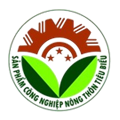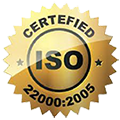
Surprise: Things that are considered waste like cocoa shells and dragon fruit seeds can bring in billions of dollars
Cocoa Shell Collection
According to a recent report by the Institute of Oil and Oil Plants Research, cocoa shells account for up to 60% of the fruit weight. Therefore, the productivity of this by-product from cocoa shells is very large, about 5.4-8.1 tons/ha/year.
In most cocoa growing areas, after harvesting and taking beans for processing, only a small part of the cocoa shells are dried and burned.
The rest (both shells and cocoa pulp) are dumped into the river, or thrown back to the tree roots for natural decomposition. The decomposition time of cocoa pods is long, from 8 months or more, causing environmental pollution...
Since 2020, Trong Duc Cocoa Company Limited (Dinh Quan District, Dong Nai) has cooperated with Ho Chi Minh City International University to research and produce products that increase the value of cocoa pods such as instant noodles, biscuits, snacks...
Mr. Dang Tuong Khanh - Director of Trong Duc Cocoa Company Limited said that biscuits and snacks made from cocoa pods have quite good market prospects.
All test results such as sensory indicators, quality, taste... are met. Currently, the enterprise is conducting trial production before launching to the market. Previously, Trong Duc Cocoa Company produced many nutritional drinks from cocoa pods such as juice, cocoa wine, syrup, caramel water...
The company also processes cocoa pods into Pectin, a type of fiber used in food production and processing.
Or like cocoa wine, Trong Duc also has 2 product lines made from cocoa shells and cocoa pulp, which are popular in the market.
According to Mr. Khanh, if cocoa is only grown for beans and then exported raw, the revenue will not be significant.
Therefore, the company must explore and find ways to take advantage of creating many products from cocoa fruit, increasing the competitiveness of the business.
Mr. Khanh calculated that every 10 tons of fresh cocoa will produce 1 ton of dry beans. If exported raw, it can earn more than 70 million VND.
With these same 10 tons, if cocoa pulp can be used, 500kg of cocoa juice can be extracted. From there, 20 bottles of wine (750ml type) can be produced, worth more than 1.6 billion VND.
Each year, Trong Duc Cocoa Company Limited has about 5,000 tons of shells discharged from the cocoa production process. This is also a source of raw materials for the production of wine and many other valuable products.
Outside the processing plant, the company's cocoa farms are also planned to form a closed ecosystem in the garden-pond-barn-forest model.
That means in addition to growing crops, the farm also has a livestock model to obtain fertilizer, or attract natural enemies to limit harmful pests.
With this model, the enterprise does not discharge waste into the environment, does not exploit resources such as land, water or overuse fertilizers and pesticides, but instead nurtures each other according to the laws of nature.
"60% of the by-products that are considered cocoa waste are utilized by the company and bring economic efficiency," said Mr. Khanh.

Small and incomplete
Dr. Pham Van Hung, representative of the research group of Ho Chi Minh City International University, said that most dragon fruit has been exported raw.
South Korea and Japan import dragon fruit and process it into many other things. And they also sell it at 5-7 times higher than the raw price in Vietnam.
According to Dr. Hung, many businesses have invested in processing dragon fruit into wine, juice, dried dragon fruit, etc.
From there, by-products such as dragon fruit peels and seeds are the raw materials to produce other products, such as essential oil extracts, juices, functional foods, etc.
“After completing the cocoa fruit project with Trong Duc Cocoa Company Limited , the group is researching the production of pharmaceuticals, cosmetics, etc. from dragon fruit peels and seeds,” Dr. Hung shared.
Associate Professor Dr. Nguyen Hong Quan - Director of the Institute of Circular Economy (Ho Chi Minh City National University) said that the circular economy has been applied in Vietnam in many ways such as garden-pond-barn, or garden-pond-barn-forest...
However, in terms of scale and modern application, the recovery of cocoa by-products or the processing of essential oils and pharmaceuticals from dragon fruit seeds is still very new in the agricultural business community.
The problem is that many businesses are having difficulty making this model popular.
Dr. Quan admitted that the core factor is that even though businesses want it, they have not yet found suitable technologies that bring both economic and social efficiency.
Not to mention, the current infrastructure of many businesses has not yet met the goals set by the circular economy. Some domestic businesses have been interested in the circular economy but the scale is still small and incomplete.
We can mention the closed-loop cow farming model on Vinamilk's farm; producing cooking oil from pangasius fat at Vinh Hoan Joint Stock Company or utilizing shrimp shells and shrimp heads to process Chitosan by Vietnam Food Joint Stock Company...
In particular, the model of collecting shrimp shells and shrimp heads to produce Chitosan has the potential to earn a value of 4-5 billion USD/year.
"However, collecting shrimp heads is difficult due to high transportation costs. The purchase price of shrimp heads has not created motivation for shrimp processing facilities to export...", Dr. Quan said.
In a recent report on 10 years of Circular Economy in Agriculture, Associate Professor, Dr. Nguyen The Chinh, former Director of the Institute of Strategy and Policy on Natural Resources and Environment, said that agricultural production is still focusing on quantity, finding ways to increase output, increase productivity and reduce costs.
To promote the circular economy in agriculture, reducing excess inputs and pesticide residues is of utmost importance. However, the criteria for sustainable development and environmental friendliness have not received due attention.
To overcome this, according to Dr. Chinh, it is necessary to first change the awareness of people and society about the economic model, that is, the economic model based on the exploitation of natural resources.























